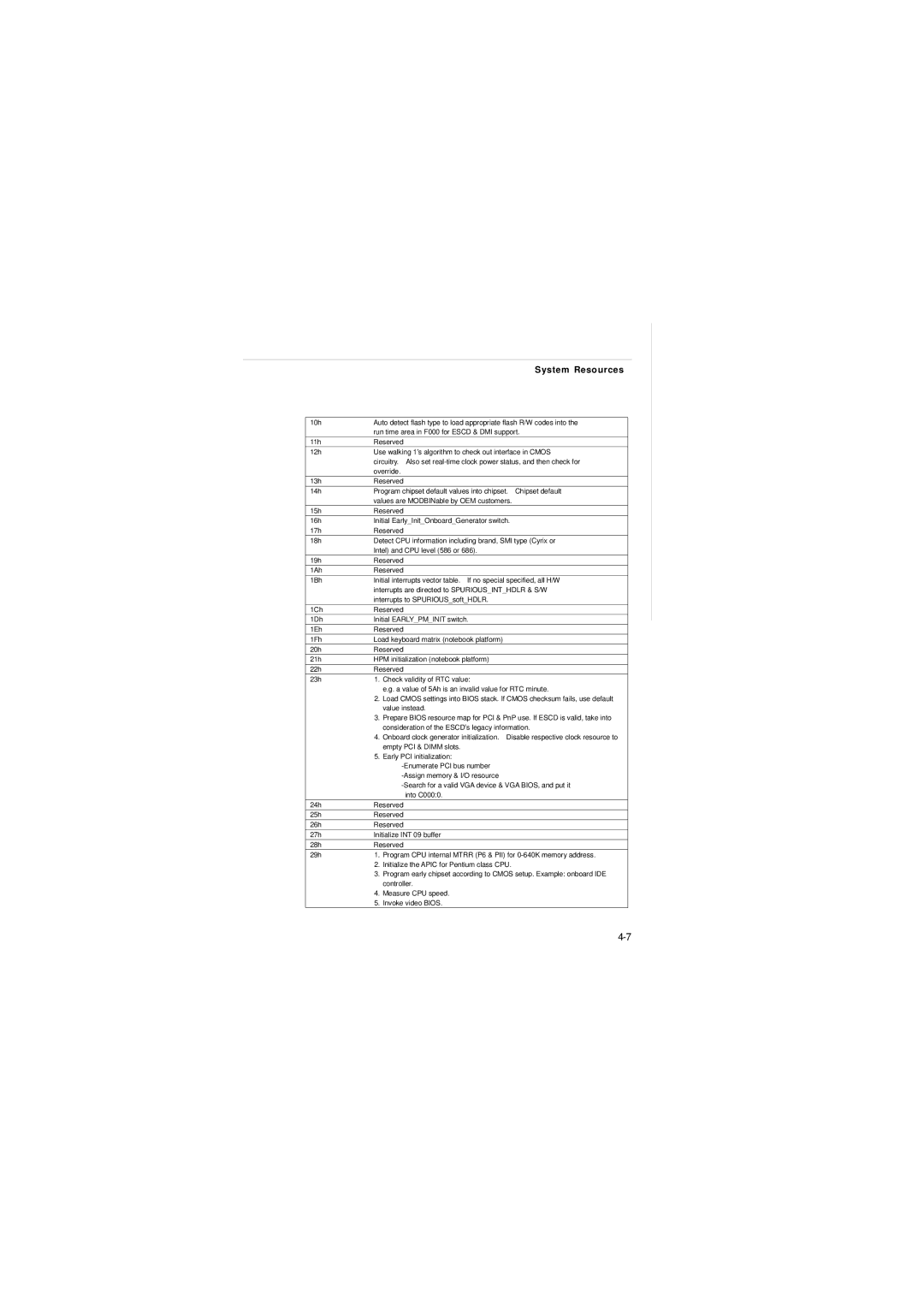
| System Resources |
|
|
10h | Auto detect flash type to load appropriate flash R/W codes into the |
| run time area in F000 for ESCD & DMI support. |
11h | Reserved |
12h | Use walking 1’s algorithm to check out interface in CMOS |
| circuitry. Also set |
| override. |
13h | Reserved |
14h | Program chipset default values into chipset. Chipset default |
| values are MODBINable by OEM customers. |
15h | Reserved |
16h | Initial Early_Init_Onboard_Generator switch. |
17h | Reserved |
18h | Detect CPU information including brand, SMI type (Cyrix or |
| Intel) and CPU level (586 or 686). |
19h | Reserved |
1Ah | Reserved |
1Bh | Initial interrupts vector table. If no special specified, all H/W |
| interrupts are directed to SPURIOUS_INT_HDLR & S/W |
| interrupts to SPURIOUS_soft_HDLR. |
1Ch | Reserved |
1Dh | Initial EARLY_PM_INIT switch. |
1Eh | Reserved |
1Fh | Load keyboard matrix (notebook platform) |
20h | Reserved |
21h | HPM initialization (notebook platform) |
22h | Reserved |
23h | 1. Check validity of RTC value: |
| e.g. a value of 5Ah is an invalid value for RTC minute. |
| 2. Load CMOS settings into BIOS stack. If CMOS checksum fails, use default |
| value instead. |
| 3. Prepare BIOS resource map for PCI & PnP use. If ESCD is valid, take into |
| consideration of the ESCD’s legacy information. |
| 4. Onboard clock generator initialization. Disable respective clock resource to |
| empty PCI & DIMM slots. |
| 5. Early PCI initialization: |
| |
| |
| |
| into C000:0. |
24h | Reserved |
25h | Reserved |
26h | Reserved |
27h | Initialize INT 09 buffer |
28h | Reserved |
29h | 1. Program CPU internal MTRR (P6 & PII) for |
| 2. Initialize the APIC for Pentium class CPU. |
| 3. Program early chipset according to CMOS setup. Example: onboard IDE |
controller.
4. Measure CPU speed.
5. Invoke video BIOS.
